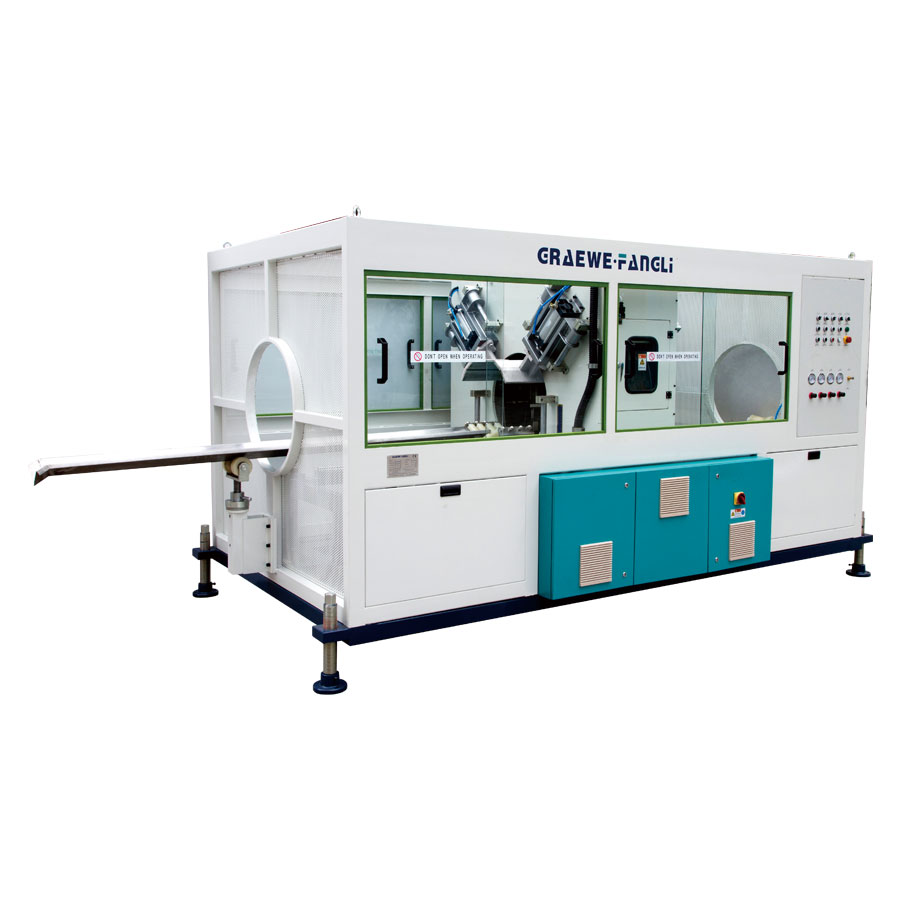Here's an overview of chipless cutting equipment and its applications
2023-12-14
Chipless cutting equipment, also known as non-contact or cold cutting equipment, is used in various industries for cutting materials without producing chips, debris, or generating excessive heat. This type of cutting is often preferred when precision and cleanliness are crucial, or when the material being cut is sensitive to heat. Here's an overview of chipless cutting equipment and its applications:
1. Methods of Chipless Cutting:
- Shearing: Shearing is a common chipless cutting method where two blades or cutting edges close together to cut through the material. This is often used for sheets or thin materials.
- Abrasive Waterjet Cutting: Waterjet cutting involves using a high-pressure stream of water mixed with abrasive particles to cut through materials. It is a versatile and precise method suitable for a wide range of materials, including metals, composites, and ceramics.
- Ultrasonic Cutting: Ultrasonic cutting involves the use of high-frequency vibrations to cut through materials. This method is particularly effective for soft and delicate materials.
- Laser Cutting: Laser cutting uses a laser beam to cut through materials. It is precise and suitable for a variety of materials, including metals, plastics, and fabrics.
- Electrochemical Cutting: In electrochemical cutting, an electrical current is used to dissolve or erode the material, allowing for precise cutting without generating heat.
2. Applications:
- Metal Cutting: Chipless cutting equipment is widely used in the metalworking industry for cutting various metals without generating heat-affected zones or burrs.
- Plastics and Polymers: Chipless cutting is suitable for cutting plastics and polymers, where precision and minimal heat generation are essential to avoid material deformation.
- Composite Materials: The aerospace and automotive industries often use chipless cutting for composite materials, ensuring clean cuts without damage to the material's structure.
- Food Industry: In the food industry, chipless cutting is used for slicing, dicing, and portioning without causing deformities or contamination.
- Textile Cutting: Chipless cutting methods like ultrasonic cutting and laser cutting are commonly used in the textile industry for precise and clean cutting of fabrics.
3. Advantages:
- Precision: Chipless cutting methods offer high precision, allowing for intricate and accurate cuts without the need for secondary processing.
- Clean Cuts: These methods produce clean cuts without burrs, chips, or debris, reducing the need for additional finishing steps.
- Reduced Heat-Affected Zones: Chipless cutting minimizes the generation of heat during the cutting process, preserving material properties and preventing heat-related issues.
- Versatility: Chipless cutting equipment is versatile and can be adapted for cutting various materials, making it suitable for a wide range of industries.
4. Equipment:
- Shearing Machines: Used for shearing or cutting sheets of materials.
- Waterjet Cutting Machines: Employ high-pressure water mixed with abrasives for cutting through materials.
- Ultrasonic Cutting Tools: Utilize ultrasonic vibrations for cutting through soft and delicate materials.
- Laser Cutting Machines: Use a laser beam for precise cutting of materials.
- Electrochemical Cutting Equipment: Utilizes electrochemical processes for cutting materials.
5. Considerations:
- Material Compatibility: Different chipless cutting methods are suitable for different materials, and the choice depends on the specific material being processed.
- Thickness: The thickness of the material can influence the choice of chipless cutting method.
- Precision Requirements: Depending on the application, the level of precision required may vary, influencing the choice of cutting equipment.
Chipless cutting equipment is a valuable solution for industries where precision, cleanliness, and minimal heat generation are critical factors. The choice of chipless cutting method depends on the specific material, application, and desired outcomes.



